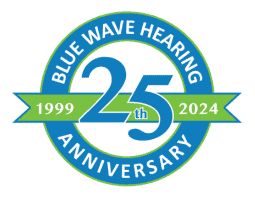- Alcohol and Hearing Health - April 9, 2025
- How Smoking Can Harm Your Ears - March 11, 2025
- Succeeding in the Workplace with Hearing Aids - February 10, 2025
You watch the road while listening to music in the car. You listen to your cousin’s crazy stories while playing board games with nieces and nephews. You’re a pro at listening while your eyes are focused on something else, right?
Not so, according to a recent study in Scientific Reports, which found that not looking at what you’re listening to slows your reaction time and increases the strain on your brain as it tries to process sound. Simply put: It pays to look at what you’re listening to. And that becomes harder in a group.
Spring Is Here, and So Are Get-Togethers
Spring and summer are for graduations, grilling, and family reunions — in short, lots of distracting background noise. Inspired by the above study, we’ve gathered some effective communication tips for when you find yourself in a group.
Tell others how best to talk to you.
Be your own advocate! Most people without hearing loss simply don’t know how to effectively communicate with someone who has a hearing loss. They want to be understood, so they’ll appreciate your input.
Turn it down.
If it’s within your power, for example, at a meal at someone’s house, ask the host to turn down the music or TV. It’s their job to ensure their guests are enjoying themselves. If it’s loud enough that you need it turned down, odds are there are others who would appreciate someone speaking up about the volume anyway.
Pick your spot strategically.
Half the battle is choosing a spot with good lighting (especially if you lip-read) that isn’t surrounded on all sides with people. Grab a spot at the end of the table, in the corner, or away from the music to minimize the background noise.
Look at the person speaking.
The above-mentioned study underscores this point: You hear better when you’re looking at what you’re listening to. And today’s tech, in general, has directional microphones that focus on amplification of sound in front, helping to filter out the noise to either side of you.
Give feedback.
Offering tips and setting expectations is only the first step. The person speaking will be expecting feedback from you so they know whether they’re doing their part, especially if you’re in a noisy environment. Provide nonverbal cues or, better yet, actually offer words of acknowledgment, encouragement, or assistance.
Ask for rephrasing.
If you don’t understand something, ask the person to rephrase — not repeat — what they said. The most common form of hearing loss is characterized by loss of clarity, not volume. Most likely, if they rephrase it, you’ll be able to better pick out the words.


